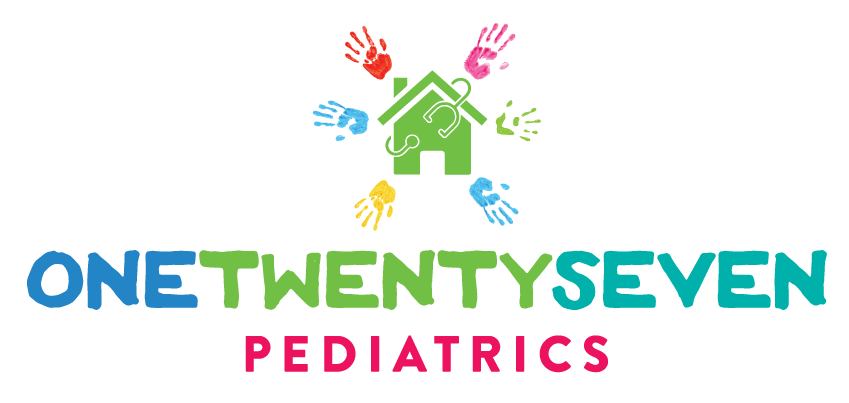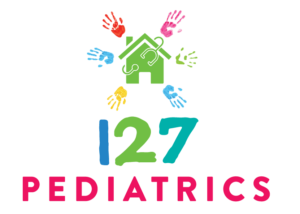What is an ear infection?
Ear infections in children are also known as otitis media. The march toward an ear infection typically begins when your child has a cold or allergies. This causes the immune system cells run to the areas where they need to fight the virus that is causing the cold. With colds and allergies, that usually means the upper respiratory tract. All of this inflammation makes these passages swollen and smaller.
Our eustacian tube is the opening between the back of the nose and our inner ear. This tube allows for free movement of fluid out of the middle ear. When you get a cold or have allergies, the inflammation in this tube makes it narrow and causes it to close off.
The fluid builds up in the middle ear and can become infected by a virus or bacteria. With nowhere to go, this fluid pushes against the ear drum causing it to bulge and become painful.
What Are the Signs Symptoms of an Ear Infection in Children?
Kids often have fever when they get an ear infection. Older kids will also complain about pain in the ears or head while younger babies may be extra fussy, especially when they are laid down on the back. Pulling at or poking at an ear is not always a sign that there is an ear infection, but many kids will mess with their ears or cry when their ears are touched if they have an ear infection.
What causes an ear infection?
Most ear infections are actually caused by the virus that is causing your child’s cold to begin with. There are also certain bacteria that are more likely to infect the fluid of the middle ear. Widespread childhood vaccination against Hib and Pneumococcal bacteria has changed the bacterial causes of ear infections over time.
A pain in the ear can be caused by other bacteria and viruses as well.
Who is most likely to get an ear infection?
Younger children are more likely to get ear infections than older children or adults. Their eustachian tubes are curved and more easily become closed off by the inflammation from an infection. In adults and older children, our tubes are straighter and therefore drain better.
Kids with face and ear differences such a cleft lip and palate have a greater chance for ear infections. Young ones with Down Syndrome are also more susceptible due to their head and neck anatomical differences. Older kids with eustachian tube dysfunction due to enlarged adenoids or chronic allergies can also be at greater risk for ear infections.
How does a doctor diagnose a middle ear infection?
Your child’s pediatrician needs to diagnose an ear infection by looking at the inside of your child’s ear. We are looking for a red and bulging ear drum. Sometimes, we can also see infected fluid behind the ear drum. Occasionally, the pressure from the fluid pushing against the ear drum will cause it to burst. This will cause puss and other fluid to discharge from your child’s ear.
How is an acute middle ear infection treated?
Young children under age 2 years old generally do not improve from their ear infection without antibiotics. Kids that are older than 2 years old can be observed without starting antibiotics since most infections are caused by viruses that will go away on their own. I will often give parents the option to observe their child if their pain can be controlled well with ibuprofen or acetaminophen. If the child is complaining of pain, has fever or just looks like they don’t feel good, I will start a course of antibiotics no matter their age.
Kids who have multiple ear infections in a row or have a lot of infections within 6 months will often need to consult with an ear, nose and throat surgeon to discuss placing tubes in their ear drums. These tiny, surgically placed tubes allow the middle ear fluid to drain out when your child gets an ear infection. They generally fall out on their own and usually by that time, your child has grown enough that their eustachian tube takes over draining the middle ear efficiently.
Occasionally, there are older children that have dysfunction of their auditory canals and need tubes later in their childhood. If your child has chronic allergies or is complaining of hearing loss, it is important to consult with an ENT doctor.
What are other causes of ear pain?
Since our anatomy works together to achieve full function, another part of the body may be hurting but it seems like its the ear. Other causes of either primary ear pain or referred pain are:
- Dental infection/abscess
- Jaw muscle pain from grinding teeth or biting down forcefully (especially while sleeping)
- Infection of the skin in the ear canal (swimmer’s ear)
- Foreign body in the ear
- Sinus infection or throat infection
- Serous (not infected) fluid in the middle ear
- Infection of the bones around the ears and side of the face (very rare)
Ear pain is miserable
As an adult, I have had an ear infection and I can tell you that the pain is miserable.
If your child is complaining of ear pain, it is best to consult his or her pediatrician. We are trained to know what to do about the different causes of ear pain. As a house call pediatrician, I often see kids the same day or next day for their ear pain.
© 127 Pediatrics, February 2022

Dr. Andrea Wadley is a pediatrician located in Dallas/Fort Worth serving families with pediatrician house calls. As a wife and mother, her posts are written with parents in mind, whether you need help with a picky eater, need to find places where kids eat free or want to know more about topics like breastfeeding and lactation.


